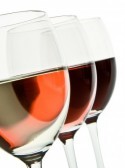Statistics
Lifestyle Vineyard Prices (Mostly) Rise, But Fine Wines Went Sour In 2014

The business of making wine produced contrasts in 2014: prices rose at “lifestyle” vineyards in places such as California and New Zealand but investors in the end-product lost money.
The business of making wine produced contrasts in 2014: prices rose at “lifestyle” vineyards in places such as California and New Zealand but investors in the end-product would have lost money had they sold it, figures show.
Just in time for the Festive Season, data from the Liv-ex exchange for fine wines in London and a survey of vineyard prices from Knight Frank paint differing pictures of who is making money from different parts of the wine business.
Liv-ex, which is an auction market for fine wine and produces a series of indices tracking prices that are fetched, suggests that some of the fizz has gone out of the market since the start of this year. The Liv-ex Fine Wine 100 Index of wines such as the great chateaux of Bordeau and Burgundy has fallenl 7.22 per cent from the start of 2014 and the end of November.
An even more select measure, the Liv-ex Fine Wine 50 Index is down 9.7 per cent. Over five years, the Liv-ex Fine Wine 100 is up by only 0.53 per cent. Among other sub-indices, such as those tracking Burgundy, Rhone and Champagne, the figures are all down since January this year. The Liv-ex 100 Index hit a recent peak in the late summer of 2011 when the air was thick with talk of a eurozone collapse and when gold prices hit a record; since then, prices have, with the occasional pause, been on the way down. Live-ex says it detects signs of recovery for its Live-ex 100 index, however, as it has risen for the last four months in a row. It also notes that regions outside of Bordeaux have increased market share, suggesting the fine wine market is not so driven by trends in the western France region.
A different picture
Over at Knight
Frank, meanwhile, it notes that the price of a lifestyle (or
hobby) vineyard rose on average by 4.5 per cent in the year to
June, slipping a bit from the 6.3 per cent rate of growth logged
a year earlier.
Such lifestyle vineyards usually comprise 2 to 15 hectares of vines with a detached family residence on the state and, occasionally, some outbuildings including a winery or bottling plant. However, such places must earn an annual return.
The best performer for such vineyards, it turns out, was the region of Sonoma County in northern California, with a rise in vineyard prices of 17.9 per cent; it comes ahead of Hawkes Bay, in New Zealand, at 17.6 per cent and Barossa, Australia, at 14.0 per cent. The Burgundy region of France was flat, while the Colchagua Valley area of Chile fell 14 per cent, Knight Frank said. In South Africa, its Stellenbosch region saw prices fall 10 per cent, with the region hit by an oversupply from grapes.
Knight Frank said such lifestyle vineyards are typically acquired by a mix of buyers, some as an early retirement projects, or bought as holiday home locations and visited several times a year with a manager living on-site.
Although the pace of growth in prices slowed in the 12 months to June, the share of regions recording a gain in prices rose to 79 per cent this year from 60 per cent in the previous 12-month period, the report said.
The property firm has also digested some figures on consumption trends for wine. Citing industry figures, it says the world’s population consumed 239 hectolitres of wine in 2013 and produced over 279 hectolitres – a clear surplus, although that gap was smaller in 2012 due to a poor harvest that year. Since 2009, demand has held broadly stable; China and Europe are consuming less wine but rising consumption in the US and Brazil is helping offset that impact.
Passions and portfolios
As far as what sort of property wealthy persons want to hold, the
Knight Frank data also showed vineyards, along with ski homes and
private islands are in demand, as these are seen as ways of
holding a mixed portfolio of hard assets. A survey of 30,000
ultra high net worth persons found that Russians, Latin Americans
and North Americans were most interested in vineyards as an
investment idea.
As far as regions which are seen as most desirable internationally, Tuscany attracts the highest share of such buyers (60 per cent). Mendoza in Argentina is, meanwhile, home to a large number of European, Canadian and US owners, and attracts 50 per cent of buyers from outside Argentina.
The report contains other nuggets of information, such as that France and Italy have seen the surface area of their vineyards shrink by 12 per cent and 15 per cent respectively since 2000.
